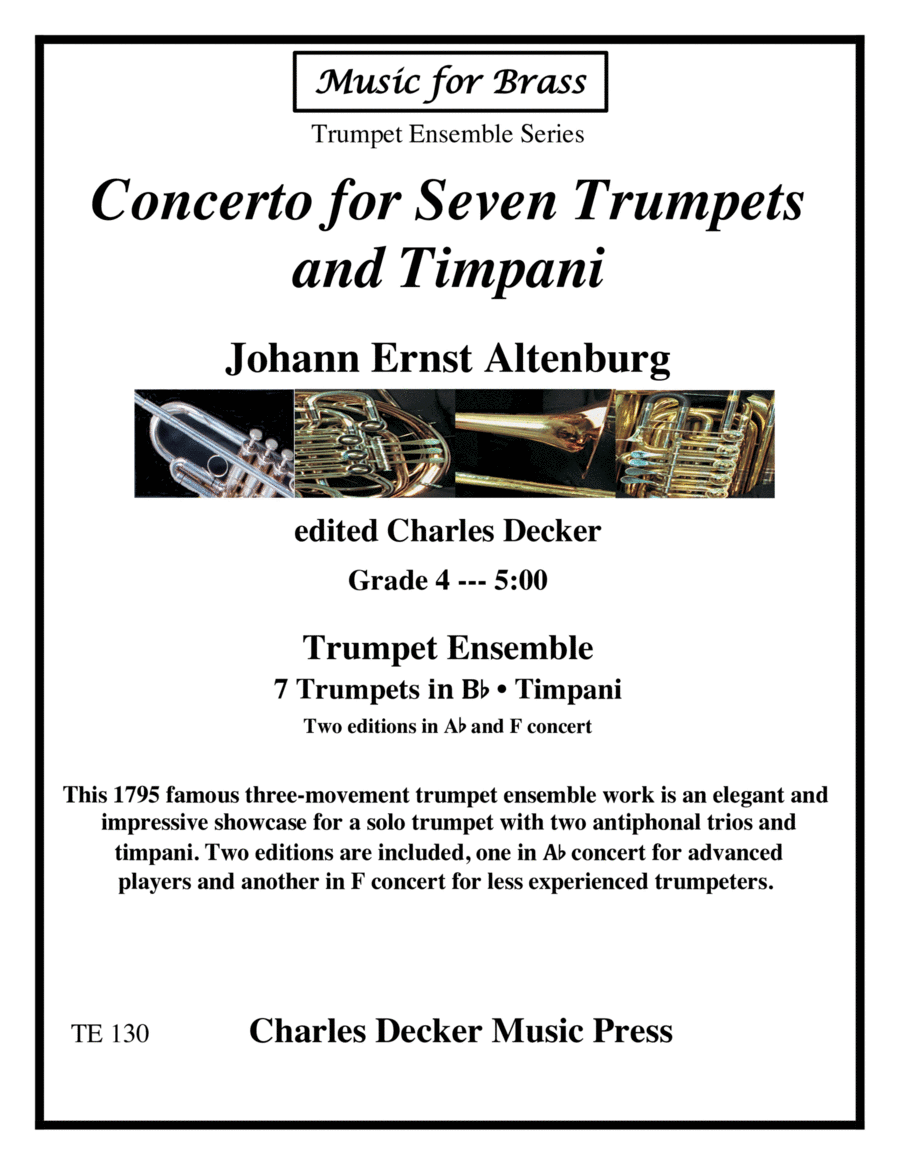Trumpet Ensemble Trumpet - Level 4 - Digital Download SKU: A0.817150 Composed by Johann Ernst Altenburg. Arranged by Charles Decker. Baroque,Chamber,Classical,Contest,Festival. 68 pages. Charles Decker Music Press #5324601. Published by Charles Decker Music Press (A0.817150). Need an impressive and accessible showcase for your ambitious trumpet section? Then this famous and elegant three-movement, mini-concerto for trumpeters from Johann Ernst Altenburgâs extensive 1795 treatise Essay on an introduction to the heroic and musical trumpetersâ and kettledrummersâ art is a rewarding experience for trumpeters to expand their musical horizons. Composed for 18th century court trumpeters with valveless instruments, the work is scored for solo trumpet with two antiphonal trios and timpani. Each movement presents contrasting musical styles, the first fanfare figures, the second expressive lyricism, and the third facile scale runs. Two complete editions for B-flat trumpets are included, each with full score and parts, one in A-flat concert for more advanced players and a second in F concert to make it more accessible for less experienced trumpeters. The second and third movements, traditionally set in 4/8 and 3/8, are changed to 4/4 and 3/4 as more frequently encountered time signatures. Consider opening your next band concert featuring the trumpet section performing this impressive work. The sound file is an actual trumpet ensemble performance of the entire edition and not a computer playback of the score.See 40+ homogeneous brass group editions for horn, trumpet and trombone ensembles and more than 70 mixed brass ensemble publications at Charles Decker Music Press at Sheet Music Plus for inexperienced to advanced musicians with music ranging from the Renaissance to contemporary new works for trios, quartets, quintets, brass choir and brass band. Many of the mixed brass ensemble editions include alternate and substitute parts being alternate C trumpet parts for B-flat trumpet parts, flugelhorn/trumpet substitute for horn, horn substitute for trombone and treble clef euphonium substitute for trombone. Check out our Music of Black Composers Series with Charles Decker Music Press at Sheet Music Plus with 25 arrangements for mixed brass ensembles ranging from early jazz to symphonic works with composers Samuel Coleridge-Taylor, R. Nathaniel Dett, William Grant Still, Will Marion Cook, James Reese Europe, James Johnson and others. All ensemble publications include recordings of the entire edition. Â Use this link to Kendor Music for more of my trumpet ensemble arrangements of music by J.S. Bach, Handel, and Renaissance composers Gervaise and Susato.
